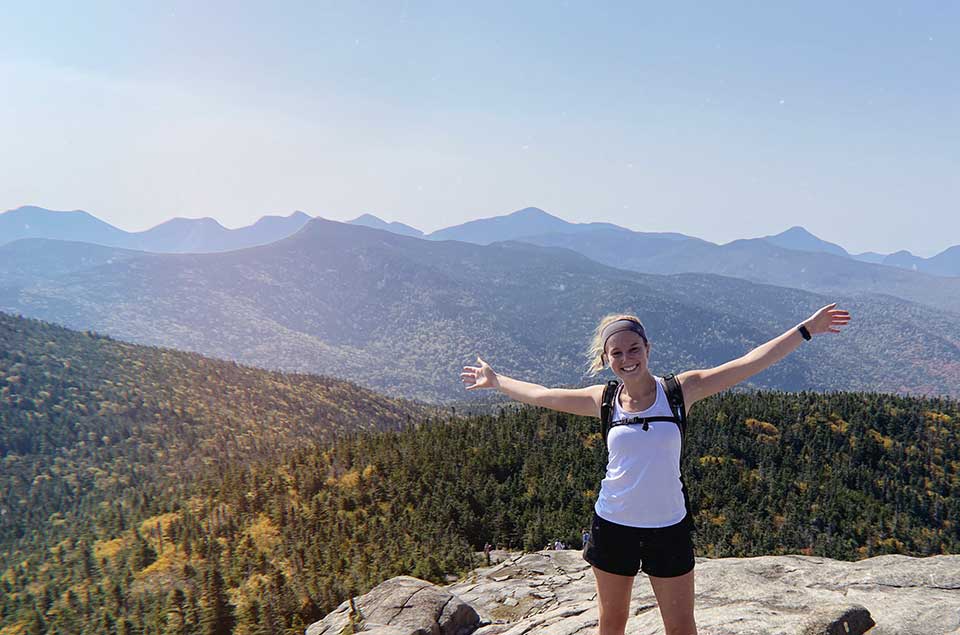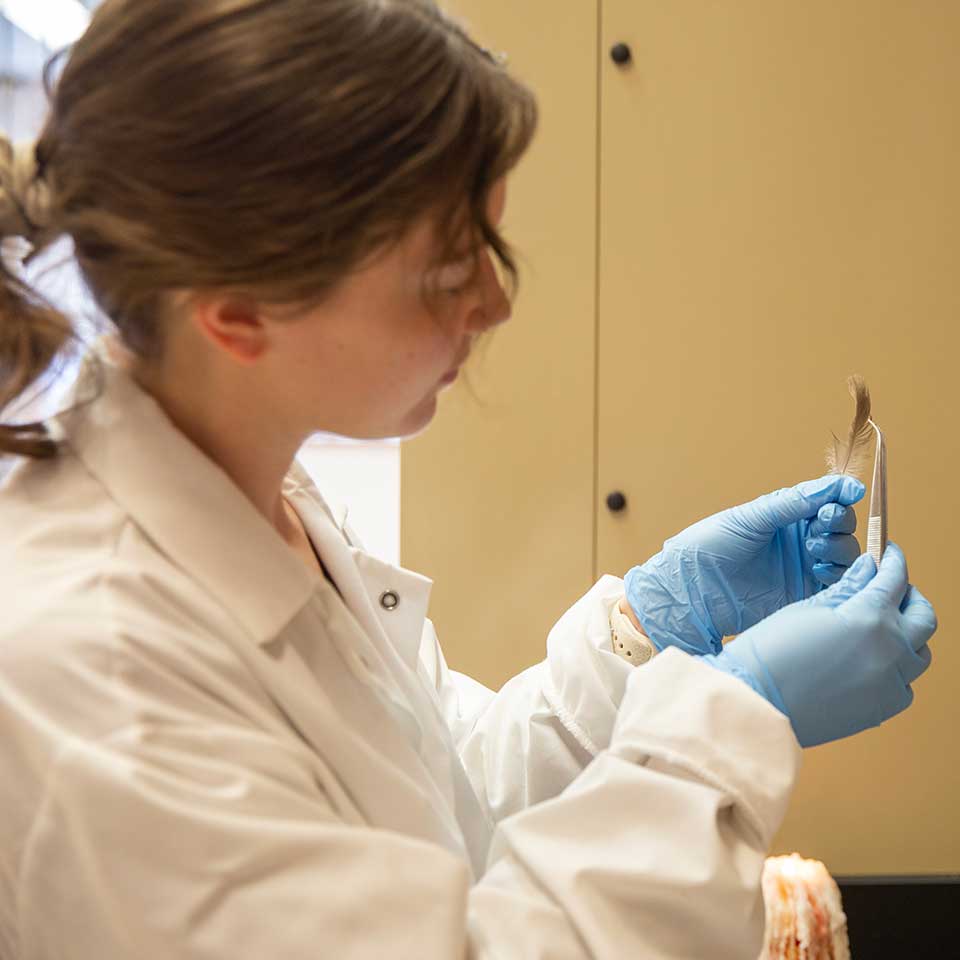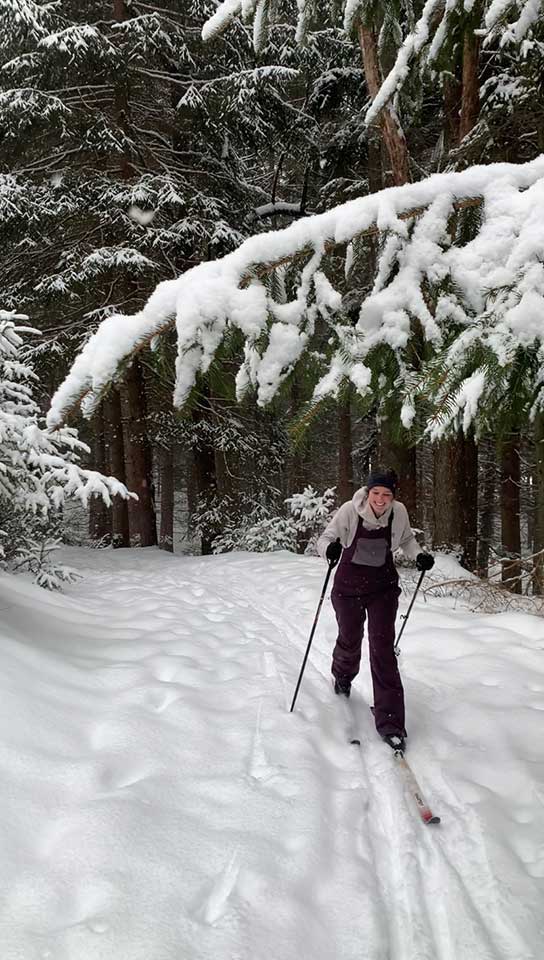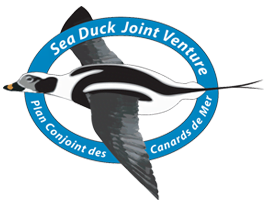
Sarah while Hiking in the Northeast. Photo: courtesy of Sarah Endyke
Sarah received her Bachelor of Science as a double major in Environmental Science and English from the University of Massachusetts, Amherst in 2020. There, she took courses in conservation and ornithology, spurring her initial interest in birds. As a result of these courses and conservation research she did in her undergraduate degree she continued on to pursue a Ph.D. starting in 2022.
Before starting her Ph.D., she worked for the USGS where part of her research involved studying the biodiversity and conservation of seabirds in Boston Harbor. This furthered her interest in birds, specifically sea birds, as well as an interest in understanding how bird movement patterns can inform conservation. These have both influenced her Ph.D. research in Ecological Systems at the University of Maryland Center for Environmental Science Appalachian Laboratory, where her research is focused on using stable isotopes to inform conservation efforts for birds of high management priority. The goal is to better understand the connectivity of populations within specific migratory flyways, especially between their breeding and wintering areas.
Throughout her Ph.D., Sarah has been involved in SDJV-funded projects focused on tracking the movement patterns of Long-tailed Ducks and Surf Scoters. The first project (SDJV Project # 158) assessed if a type of intrinsic marker, stable hydrogen isotopes, could be a useful tool for understanding Long-tailed Duck and Surf Scoter movement patterns. Upon promising results, a second project (SDJV Project # 171) was funded to investigate the strength of migratory connectivity among North American Flyways for Long-tailed Ducks and Surf Scoters using stable hydrogen isotopes.

Sarah doing labwork with a feather sample. Photo: courtesy of Sarah Endyke
Using feather samples collected from juvenile birds in wintering areas, stable hydrogen isotope analysis allows scientists to backtrack to the location where the feather was grown (i.e., the natal area). However, the use of hydrogen isotopes is limited as values vary latitudinally and altitudinally, but not significantly longitudinally. Another limitation is that hydrogen isotopes are not incorporated into feathers the same way in every species, providing some variability in results. To combat limitations, Sarah’s 2024 SDJV Student Fellowship research proposes to incorporate an additional isotope to allow for more refined estimates of migratory patterns. For this, Sarah is using stable sulfur isotopes, which are not as closely tied to diet as hydrogen, and don’t differ significantly across species the way hydrogen isotopes do. However, the use of sulfur isotopes has not yet been explored in sea ducks, and while there is evidence sulfur varies across the landscape from Europe and Asia, it hasn’t been tested in North America. Her research aims to create a baseline map of how sulfur isotopes are distributed across the landscape, and to apply isotope analysis of sulfur and hydrogen to better delineate breeding sites in Long-tailed ducks and Surf scoters.
Thanks to the initial SDJV project, Sarah has around 700 feather samples from all four North American Flyways that she can use for isotope analysis. While she has not completed the data analysis yet, the results of this project may have implications for how we approach flyway based bird management. If her data finds connectivity within flyways is strong, that provides support for current management approaches. The results could also highlight the significance of specific breeding sites, supporting further protections for those areas. However, if her data finds a lack of connectivity, or use of sites across flyways, this could indicate we need to rethink management approaches for some sea duck species. She also hopes to incorporate habitat suitability models to further refine her results.

Sarah while cross country skiing, one of her favorite winter activities. Photo: courtesy of Sarah Endyke
Outside of her research, Sarah is similar to her arctic study species, with a preference for the cold and winter. She loves reading, cross country skiing, hiking, camping, and spending time outdoors in general. Long term, she hopes to continue doing research and aims to get into teaching, and is interested in conservation and management in any field. She will also be presenting at the American Ornithological Society this October, and would love to see some friendly sea duck community faces in the audience!
